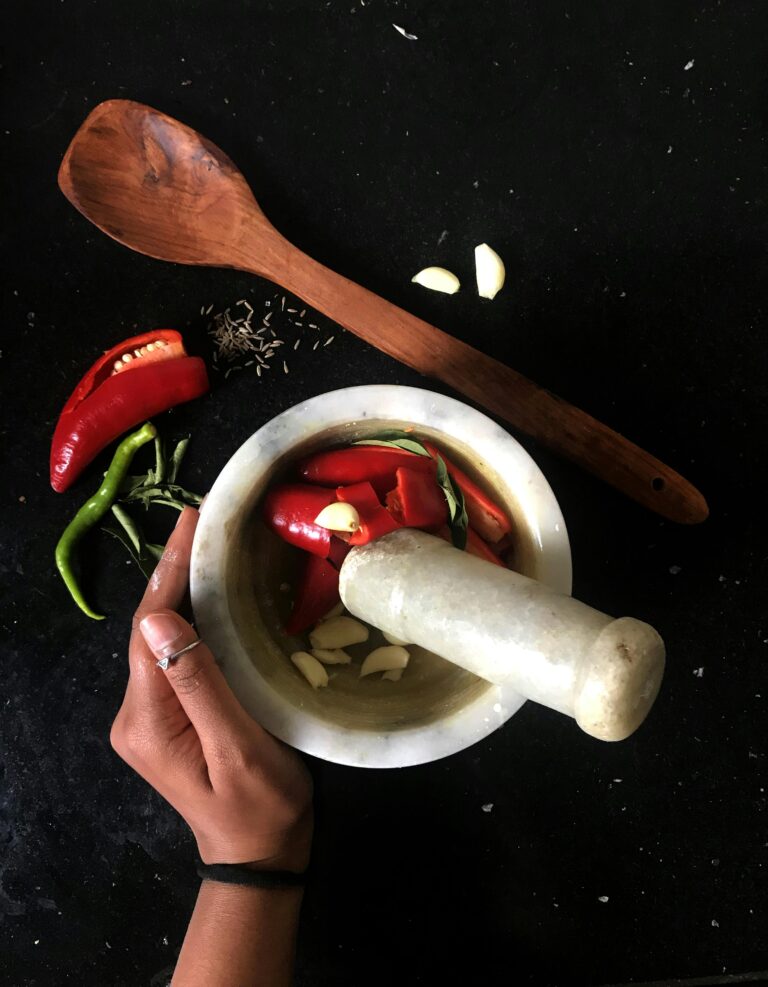RED CHILLI (LAL MIRCH)

BEST RED CHILLI

The Fiery Spice: Red Chilli (Lal Mirch)
Red chilli, known scientifically as Capsicum annuum, and popularly referred to as Lal Mirch in India, is one of the most essential spices globally. Renowned for its heat and vibrant color, red chilli adds depth and complexity to culinary creations while also offering numerous health benefits. In this article, we will delve into its origins, everyday uses, leading producing countries, prominent Indian states for chilli cultivation, and the top ten benefits of this fiery spice.
Origins of Red Chilli
Red chilli has a rich and fascinating history. Originally native to Central and South America, its cultivation dates back thousands of years. Archaeological evidence suggests that chilli peppers were domesticated as early as 6000 BCE in Mexico. They were introduced to Europe and Asia in the late 15th and early 16th centuries following the Columbian Exchange, which transformed global cuisine.
Once in India, red chillies quickly became integral to local cooking, adapting to various regional tastes and culinary practices. India is now one of the largest producers and consumers of red chilli in the world, with the spice deeply woven into its culinary traditions.

Everyday Uses of Red Chilli
Red chillies are utilized in a multitude of ways, making them a versatile ingredient in kitchens worldwide. From whole dried chillies to powdered forms, they add flavor, color, and heat to a wide variety of dishes. Here are some common applications:
Culinary Spice: The primary use of red chilli is in cooking. Whether used whole, crushed, or powdered, it enhances flavors in dishes such as curries, stews, sauces, and marinades. Indian cuisine, in particular, showcases the variety of chillies through dishes like Vindaloo, Rogan Josh, and various chutneys.
Flavoring Agent: Red chilli powder is often combined with other spices to create spice blends like garam masala or curry powder, intensifying the overall flavor profile of dishes.
Preservation: The heat from red chillies can act as a natural preservative, inhibiting the growth of bacteria and fungi. This makes them particularly useful in pickling and canning processes.
Coloring Agent: The vibrant red color of chillies makes them an excellent natural coloring agent in dishes, adding visual appeal to meals.
Garnishing: Whole dried red chillies are often used as a garnish, adding not just aesthetic value but also a hint of heat when added to dishes just before serving.
Infusions: Red chillies can be infused into oils or vinegars, creating spicy condiments that elevate a variety of dishes, from salads to grilled meats.
Snacks: In many cultures, particularly in India, red chillies are used in snack foods like bhujia, sev, and roasted nuts, providing a spicy kick that enhances flavor.
Salsas and Sauces: Red chillies are a key ingredient in various salsas and hot sauces, contributing to their heat and flavor complexity.
Medicinal Uses: In traditional medicine, red chillies have been used for their anti-inflammatory and pain-relieving properties, often applied topically in oil form.
Herbal Remedies: Some cultures utilize red chillies in herbal remedies for ailments such as congestion or digestive issues, leveraging their warming properties.
Leading Producers of Red Chilli
Globally, India is the largest producer of red chillies, contributing to approximately 25% of the world’s total chilli production. Other major producers include China, Mexico, Spain, and the United States. India’s diverse climate and soil conditions make it particularly suitable for growing various types of chillies, which are crucial for its cuisine.
Prominent Indian States for Chilli Production
In India, several states are renowned for their chilli production:
Andhra Pradesh: Known for its high-yield and spicy varieties, Andhra Pradesh is one of the leading chilli-producing states, particularly around Guntur, which is famous for its Guntur Sannam chilli.
Madhya Pradesh: This state is recognized for producing both large quantities and diverse types of chillies. The districts of Khargone and Khandwa are notable for their chilli farms.
Karnataka: With a significant production of both red and green chillies, Karnataka’s districts such as Chitradurga and Belgaum contribute substantially to the state’s agricultural economy.
Tamil Nadu: Known for its spicy varieties, Tamil Nadu cultivates chillies in regions like Dindigul and Thoothukudi.
Odisha: The state produces chillies primarily in the Kalahandi and Bolangir districts, with a focus on both quality and quantity.

Top 10 Uses of Red Chilli
Culinary Enhancer: Red chillies are an essential ingredient in many cuisines, providing heat and flavor in dishes ranging from curries to stir-fries.
Health Benefits: Rich in vitamins A and C, red chillies are known to boost immunity and improve overall health.
Weight Management: Capsaicin, the compound responsible for the heat in chillies, has been shown to increase metabolism, potentially aiding in weight loss.
Pain Relief: Red chilli extract is often used in topical creams for its analgesic properties, providing relief from muscle and joint pain.
Digestive Aid: Consuming red chillies can stimulate digestion by increasing gastric juices, which may help in alleviating digestive issues.
Anti-inflammatory Properties: The antioxidants in red chillies help reduce inflammation in the body, contributing to overall health.
Cardiovascular Health: Some studies suggest that capsaicin can help reduce cholesterol levels and improve heart health by enhancing blood circulation.
Mood Booster: The consumption of red chillies triggers the release of endorphins, which can elevate mood and create a sense of well-being.
Natural Insect Repellent: The pungent smell of red chillies can deter certain insects, making them a natural pest repellent in gardens.
Cultural Significance: In many cultures, red chillies are used in rituals and traditional practices, symbolizing prosperity and warding off evil spirits.
HENCE,…
Red chilli, or Lal Mirch, is not just a spice; it is a fundamental component of culinary art and cultural heritage. Its journey from the Americas to India has transformed global cuisine and shaped the way flavors are perceived. As one of the most significant spices in the world, red chilli continues to spice up dishes while offering a multitude of health benefits. Whether in a home-cooked meal or a gourmet dish, the fiery kick of red chillies remains irreplaceable, proving that even the smallest ingredient can have a profound impact on our culinary experiences and overall health.
